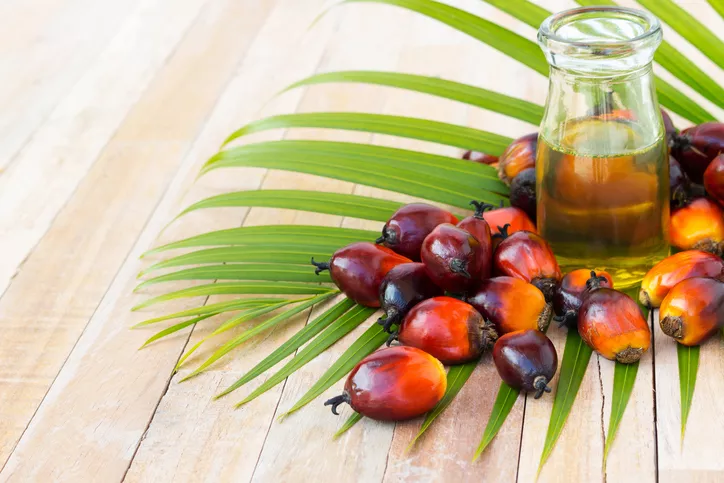Closely related to the coconut palm, the oil palm is the world's most productive oil crop. The oil of the tropical crop is used in the food and technical industries as well as for the production of bioenergy.
 The fruits of the oil palm have an oil content of up to 50%
The fruits of the oil palm have an oil content of up to 50%
- Scientific name: Elaeis guineensis Jacq
- Order: palmaceous
- Family: palm trees
- Origin: Tropical West Africa
- Main growing areas: South America, Indonesia, Malaysia
Look
The wild form of the oil palm grows to a height of around 30 meters and can live up to 200 years. Cultivated on plantations, the growth form has been changed through breeding so that the palm remains a little smaller.
tribe
As with many palm species, this only develops after a few years when the growth in thickness is complete. It's heavily structured.
leaves
The deeply pinnate leaves are up to seven meters long. They stay on the palm for about two years, then dry up and fall off. A clear scar remains at the base of the leaf, in which plant debris and airborne substances accumulate. It is typical of the oil palm that epiphytes settle here.
blossoms
The oil palm forms large inflorescences from about the third year of life, consisting of a stable inflorescence axis with many lateral axes. The inflorescence carries either male or female flowers, mixed inflorescences rarely occur in young palms. Female flowers can be recognized by the thorny bracts, which remain on the ripe infructescence.
fruit
The drupes are ripe six to nine months after pollination. They are three to six centimeters long, two to four centimeters wide and weigh about twenty grams. The thin outer shell surrounds the yellow to reddish, fibrous flesh, which consists of about 50 percent oil. This is only formed in the last month of ripening, and the initially hard fruits become soft as a result. It is harvested when the first fruits separate from the fruit cluster, because then the oil content is at its highest.
Depending on the size of the tree, this is done with long bamboo sticks, at the end of which a kind of sharp sickle is attached. Sometimes the workers climb the palm trees and cut off the heavy clusters of fruit with knives at a dizzy height. Palm oil is then extracted from the pulp and palm kernel oil from the palm seeds
tips
Since it can be produced so cheaply, palm oil is now found in many of the products we use every day. Since the large oil plantations are not without controversy for environmental reasons, it makes sense to only use products that contain certified palm oil.